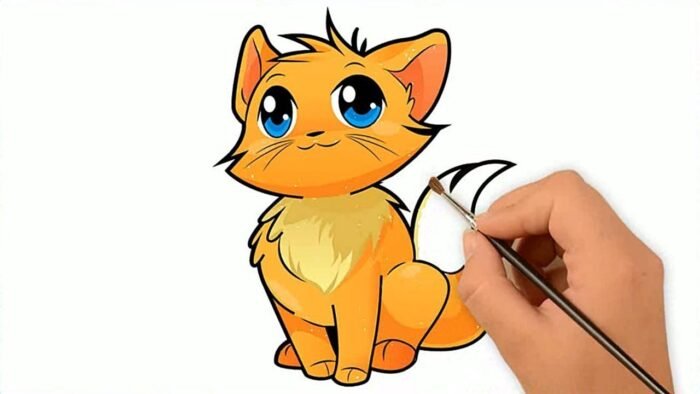
Drawing is a foundational skill in the visual arts, accessible to everyone. Whether you’re a complete novice or looking to refine your abilities, understanding the basics is crucial. Start with simple shapes and practice regularly. Focus on observing and replicating lines, forms, and proportions accurately. This guide covers everything from selecting your tools to mastering the essentials, ensuring a strong start to your drawing journey.
10 Essential Drawing Techniques Every Artist Should Know
Mastering various techniques can significantly enhance your artwork. Key techniques include hatching, cross-hatching, stippling, and blending, each creating different textures and effects. Additionally, understanding perspective, foreshortening, and gesture drawing helps in achieving realistic depictions. Experiment with these methods to discover which ones best suit your style and improve your overall skill set.
How to Improve Your Drawing Skills: Tips and Tricks
Improving your drawing skills requires dedication and strategic practice. Start by drawing daily, focusing on different subjects and styles. Study anatomy and perspective to enhance realism. Use references to understand light and shadow better. Critique your work and seek feedback from others. Over time, you’ll notice significant improvements in your technique and confidence.
Exploring Different Drawing Styles: From Realism to Abstract
Artistic expression varies widely, from detailed realism to loose abstraction. Realism focuses on accurate, lifelike representations, requiring careful observation and technical skill. In contrast, abstract drawing prioritizes expression and interpretation over exact likeness. Explore various styles like impressionism, surrealism, and cubism to find your unique voice and expand your creative horizons.
Top 5 Drawing Tools You Need in Your Art Kit
Having the right tools can make a significant difference in your drawing experience. Essential items include quality pencils (ranging from HB to 9B for different shading), erasers (kneaded and precision types), a sketchbook with suitable paper texture, blending stumps for smooth shading, and fine liners for detailed work. Investing in these basics ensures you have everything needed to start creating.
Step-by-Step Guide to Drawing Faces
Drawing faces can be challenging but rewarding. Begin by sketching the basic shape of the head and adding guidelines for the eyes, nose, and mouth. Pay attention to proportions: eyes are typically one eye-width apart, and the nose and mouth align symmetrically. Focus on capturing the unique features and expressions to create lifelike portraits. Practice different angles and lighting conditions to improve your skills.
How to Draw Animals: Tips for Capturing Lifelike Creatures
Drawing animals requires understanding their anatomy and movements. Start with basic shapes to outline the body structure. Study the specific proportions and features of different species. Pay attention to fur or skin textures and how light interacts with them. Observing real animals, photos, or videos can provide valuable reference points for capturing their essence accurately.
Mastering Perspective in Your Drawings
Perspective is crucial for creating depth and realism. One-point, two-point, and three-point perspectives each offer different ways to represent space. Practice drawing objects and scenes using vanishing points to guide your lines. Understanding how to depict foreground, middle ground, and background elements will enhance the sense of depth in your drawings, making them more engaging and believable.
The Benefits of Daily Drawing: How to Build a Habit
Drawing daily can greatly improve your skills and creativity. Start by setting aside a specific time each day, even if it’s just for 15 minutes. Keep a sketchbook handy to document your progress. Focus on different subjects and techniques to keep the practice engaging. Over time, you’ll develop a routine that enhances your abilities and fosters a deeper connection with your art.
Creative Drawing Exercises to Boost Your Imagination
Engaging in creative exercises can stimulate your imagination and break through artistic blocks. Try blind contour drawing, where you draw without looking at your paper. Experiment with drawing from memory or creating art prompts. Doodle freely to explore new ideas. These activities encourage free thinking and can lead to unexpected and exciting artistic discoveries.
Drawing with Charcoal: Techniques and Tips
Charcoal is a versatile medium that offers rich, dramatic results. Begin with vine charcoal for initial sketches and switch to compressed charcoal for darker tones. Use blending tools like stumps or tissue to create smooth gradients. Experiment with erasers to add highlights and texture. Charcoal’s expressive quality makes it ideal for capturing mood and movement in your drawings.
How to Draw Dynamic Poses: A Beginner’s Guide
Dynamic poses bring life and energy to your drawings. Start by studying human anatomy and practicing gesture drawing to capture the essence of movement. Use lines of action to guide the flow of the pose. Practice drawing from live models or action photos. Focus on balance and weight distribution to make your figures appear more realistic and engaging.
The Importance of Light and Shadow in Drawing
Understanding light and shadow is crucial for adding depth and realism. Study how light interacts with different surfaces and forms shadows. Practice shading techniques like hatching and blending to create smooth transitions. Experiment with light sources from different angles to see how they affect your subject. Mastering these elements will give your drawings a three-dimensional quality.
Exploring Color in Your Drawings: Tips for Using Colored Pencils
Colored pencils offer a vibrant way to enhance your drawings. Start with a light base layer and gradually build up color intensity. Experiment with blending techniques, using both pencils and blending tools. Pay attention to color theory, understanding how different colors interact and affect the mood of your piece. Practice layering and mixing colors to achieve the desired effects.
How to Create Stunning Landscape Drawings
Landscape drawing allows you to capture the beauty of nature. Begin by observing and sketching the basic shapes and layout of the scene. Focus on elements like trees, water, and sky. Pay attention to perspective and how it affects the placement of objects. Use different shading techniques to depict textures and depth, creating a captivating and realistic landscape.
From Sketch to Finished Piece: The Drawing Process Explained
Transforming a sketch into a finished piece involves several stages. Start with a rough outline, focusing on composition and proportions. Gradually add details and refine your lines. Build up shading and texture to enhance depth and realism. Take breaks to view your work from different angles and make necessary adjustments. This process ensures a polished and cohesive final artwork.
Drawing with Ink: Techniques for Beginners
Ink drawing offers precision and boldness. Start with simple tools like fine liners or dip pens. Practice basic techniques such as line variation, stippling, and hatching. Use ink washes to create gradients and shadows. Experiment with different nibs and papers to find your preferred style. Ink’s permanence encourages careful planning and deliberate strokes, enhancing your drawing discipline.
Inspiration for Your Next Drawing: Where to Find Ideas
Finding inspiration is essential for continuous creativity. Explore nature, everyday objects, and urban scenes for ideas. Study art history and contemporary works to see how other artists approach their subjects. Keep a sketchbook to jot down ideas and doodles. Participate in drawing challenges or prompts to push your boundaries. Inspiration can come from anywhere; stay curious and open to new experiences.
Common Drawing Mistakes and How to
Avoid Them
Every artist makes mistakes, but recognizing and correcting them is key to improvement. Common mistakes include incorrect proportions, inconsistent perspective, and overworking details too soon. Avoid drawing too heavily, which makes erasing difficult and can damage paper. Always step back to assess your work regularly, making necessary adjustments. Learning from these errors will enhance your drawing skills and lead to more polished results.
The Therapeutic Benefits of Drawing: Art as a Form of Meditation
Drawing can be a deeply therapeutic activity, offering a form of meditation and stress relief. The act of creating art helps to focus the mind and reduce anxiety. It allows for self-expression and emotional release. Regular drawing practice can improve mental clarity and foster a sense of accomplishment. Embrace drawing not only as a skill to be mastered but also as a beneficial practice for overall well-being.
Conclusion
Drawing is a versatile and enriching skill that fosters creativity, improves observation, and provides therapeutic benefits. By exploring various techniques, styles, and tools, artists can continuously improve and find personal satisfaction in their work. Whether you’re a beginner or an experienced artist, there’s always something new to learn and enjoy in the world of drawing.







